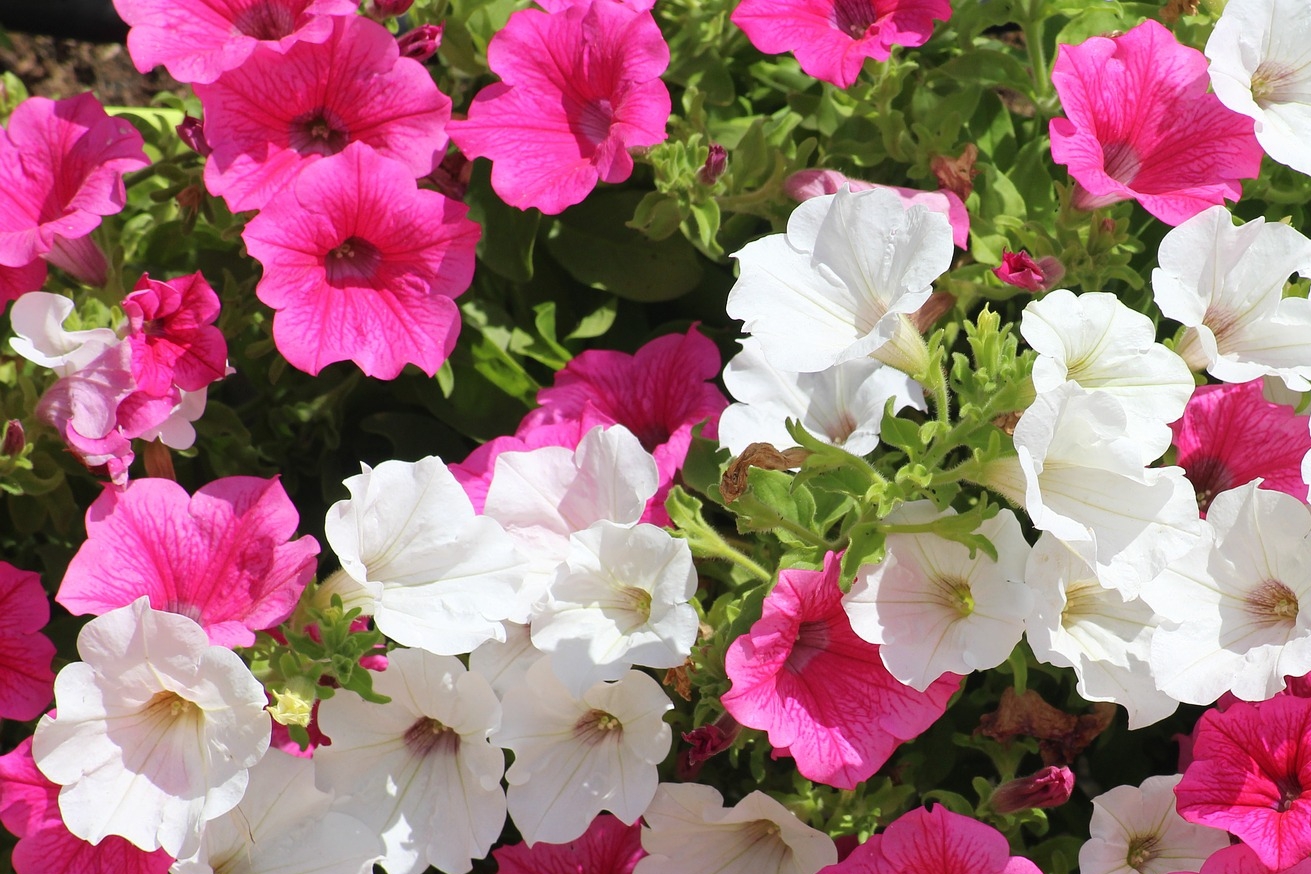
Planting, Growing, and Caring for Petunias
Read Next
Types
Multifloras
- ‘Carpet Series’ is very popular. They are compact, early blooming with 1½- to 2-inch blooms that come in a wide variety of colors, and are ideal for ground cover.
- ‘Primetime’ series stay compact and uniform, covered with 2¼-inch flowers.
- ‘Heavenly Lavender’ is an early, compact, double, deep lavender blue with 3-inch blooms on 12- to 14-inch plants.
Grandifloras
- ‘Sugar Daddy’ (Petunia Daddy Series), which sports purple flowers with dark veins.
- ‘Rose Star’ (Petunia Ultra Series), whose flowers look striped because of its rose-pink flowers with a white center.
Floribundas
- ‘Celebrity’ series petunias are compact and rain-tolerant. The flowers reach 2½ to 3 inches across.
- ‘Madness’ series petunias have big, 3-inch flowers in many veined and solid colors. They are compact and bloom until frost. They bounce back well after rain.
- ‘Double Madness’ petunias are compact and floriferous with big, 3-inch flowers all through the summer. Like their single counterparts, ‘Double Madness’ petunias bounce back within hours of a rainstorm.
Millifloras
- ‘Fantasy’ forms neat, compact mounds.
Trailing Petunias
- ‘Purple Wave’ was the first cultivar in the class of spreading petunias. It produces large blooms of deep rose-purple. It is tolerant of summer heat, drought, and rain damage. ‘Purple Wave’ remains under 4 inches tall.
- ‘Wave’ series petunias are available in a multitude of colors. Most are not quite as ground-hugging as the original. They are weather tolerant, disease resistant, and heavy-blooming.
Gardening Products
More Like This
Aye, Ian!
Our sources suggest that petunia are long-day plant that flower under any photoperiod. Short periods delay flowering and tends to result in "stretched" plants. See comments (answers above) for growing under florescent lights. Consider, too, night temps of 60°F to 63°F and daytime temps of 70°F to 75°F. Good luck with this—and thanks for asking from so far!
It's fine to plant petunias in the same soil next year. Just add some well-rotted manure or compost before planting.
Petunias are great in the vegetable garden. They repel aphids, asparagus beetles, leafhoppers and tomato worms. Some plants that thrive with petunias as companions are basil, beans, tomatoes, corn and peppers. Roses and petunias also grow well together.
Hi Karen,
Petunias can overwinter indoors but you need to give them lots of light (a south-facing sunny window may work) and add some humidity to the indoor air. Put gravel in a plastic tray and add water. Then place your pots on the gravel. The petunias may still get leggy and stop blooming. You can also take some cuttings from the mother plant and start these indoors. Good luck!
- « Previous
- 1
- 2
- …
- 10
- Next »












Comments